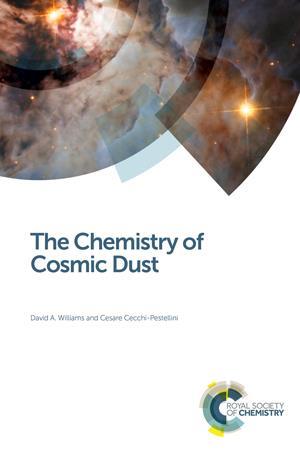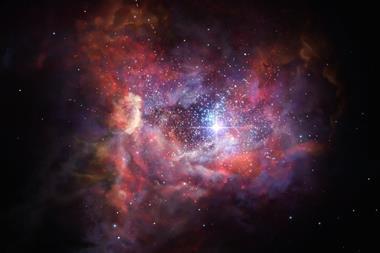David Williams and Cesare Cecchi-Pestellini
Royal Society of Chemistry
2015 | 304 | £61.99
ISBN 9781782620471
Buy this book from the RSC book store

The chemistry of cosmic dust is a very welcome critical overview of this fast-moving field in astrochemistry. It covers chemical aspects of interstellar dust, on which there are a large number of research papers and some very good reviews, but no current book. Williams and Cecchi-Pestellini are to be congratulated; this volume will be of great benefit to current and upcoming researchers in astrochemistry. There have been many advances in our understanding of dust-mediated astrochemistry, but there are still many open questions and these are clearly spelled out in the book.
This easy-to-read book has an excellent scientific and historical introduction, followed by four main sections: the nature of interstellar dust, its formation and evolution, its chemical activity and its role in the Universe. Building on a detailed description of the chemical nature, properties, formation and astronomical observations of dust grains in a wide range of astrophysical environments, the chemical focus is on two areas – reactions between atoms and molecules adsorbed on ‘bare’ grains, and solid-state chemistry resulting from reactions in the icy coatings on interstellar dust grains.
The formation of large molecules in ices and their release into the gas phase is presented in a nicely blended discussion of laboratory, observational and modelling research. I particularly enjoyed reading the later chapters on the role of dust in the formation of stars and galaxies. A very welcome theme running throughout the book is the coverage of laboratory studies, which is perhaps something of a Cinderella subject in astronomy, but no less a vital aspect of the field.
The final chapter is charmingly entitled: ‘Are we nearly there yet?’ – in answer to which the authors conclude that the journey has brought the field to a satisfactory position, especially with regard to the formation of molecular hydrogen. However, they emphasise that understanding the formation of simple hydrides and complex organic molecules in ices requires more research. This also applies to the role of dust in prebiotic chemistry and its possible relevance to the biggest open question of all.












No comments yet